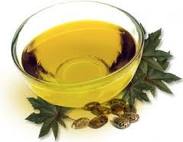- Pretreatment Section of the Oil Mill Plant
- Pressing Section for Oil Mill Plant
- Solvent Extraction Plant
- Oil Refining Plant
- Filling Section of the Oil Mill Plant
- Oil Modification Plant
- Seed Processing Plant
- Small Oil Production Line
- oil press
- YZS-30 Sesame Oil Pressing Machine
- YZS-68 Soya Oil Press
- YZS-80 Canola Oil Press
- YZS-95 Sunflower Seed Oil Press
- YZS-100 Oil Expeller Press
- YZS-120 Oil Pressing Machinery
- YZS-130 Screw Oil Press
- YZS-160 Oil Seed Press
- YZS-80A Combined Oil Press
- YZS-95A Automatic Oil Press Machine
- YZS-100A Automatic Oil Expeller
- Steel Silo
- Face Mask
- Oil Production Process 5S Groundnut
- Physical Refining Process Of The Edible Oil Refining Machine
- Cottonseed Oil Processing Equipment
- Something About Sunflower Oil Extraction Machine
- Something About Soybean Oil Refining Machine
- Something About Edible Oil Solvent Extraction
- Rice Bran Oil Extraction Equipment
- Soybean Oil Refining Equipment
Castor Oil Processing
Castor Oil Processing
Castor oil has several commercial application as well. Because it is insoluble in benzine and has a very low freezing point, it is well suited for the lubrication of airplane engines. Castor oil is also used in hydraulic brake fluids and in biodegradable laundry detergents, as well as in paints and varnishes. Oil meant for these purposes is extracted by heat and is poisonous.

Castor seed is the source of castor oil, which has a wide variety of uses. The seed contain between 40% and 60% oil that is rich in triglycerides, mainly ricinolein. The seed contains ricin, a toxin, which is also present in lower concentrations throughout the plant.
Castor seed is grown commercially on plantations but also harvested from wild plants. The seed must be hulled after harvesting. This can be done laboriously by hand or, more commonly, by machine. Small-scale hand-operated dehullers are available.
Castor Oil Plant
In order to process quality castor oil from castor seeds, two main stages occur in the castor oil plant.
Oil Extraction in the Castor Oil Plant
Extraction of oil from castor oil plant seeds is done in a manner similar to that for most other oil seeds. The ripe seeds are allowed to dry before being split open to discharge the seeds. These seeds are cleaned, cooked and dried prior to extraction. Cooking is done to coagulate protein (necessary to permit efficient extraction), and to free the oil for efficient pressing.
Prepressing is the first step. Using a high pressure continuous screw press called the oil expeller. Extracted oil is filtered, and the material removed from the oil is fed back into the stream along with fresh material. Material finally discharged from the press, called cake, contains to 10 percent oil. It is crushed into a coarse meal, and subjected to solvent extraction with hexane or heptane.
Oil Purification in the Castor Oil Plant
Once the oil has been extracted from the seed, it is necessary to remove impurities from the oil. The oil is essentially a pure triglyceride, and contains almost 90% glyceryl tricinoleate. It is the ricinoleic triglyceride that is needed in order to produce high quality castor oil.


